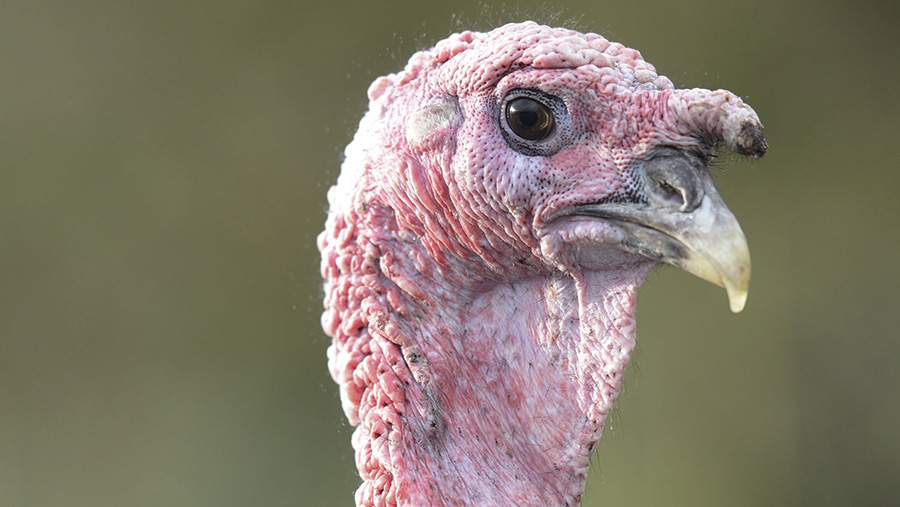Plan seasonal turkey feed rations now for Christmas success
 © Artur Widak/Nur Photo/REX/Shutterstock
© Artur Widak/Nur Photo/REX/Shutterstock The Christmas holidays seem a long way off for most.
But for turkey producers, now is the time to start planning ahead for this year’s seasonal market.
Among many decisions being made, diet formulation will be one of the main considerations.
And ultimately, it will be the objectives of the farm’s production system that will help determine the feed programme needed to support optimum growth up to finishing.
See also: Data management helps egg producers improve profits
Ade Adebiyi, ABN’s poultry nutritionist, says that, although there are some similarities between broiler and turkey production, there are some key variations to consider.
“In all aspects of poultry production, diets are always tailored to the production system to take into account different on-farm challenges, management and operation systems.
“But with turkeys, optimum growth rate is the main objective.
“Steady growth over their lifespan is vital.
“There is the risk that, if nutrition is not right, turkeys can grow too fast, or too slow in which case they may struggle to reach target end weights in time for December deadlines.
“Consequently, feed programmes are managed by bodyweight, and the complete production process is longer than broiler production.
“A typical production period for a turkey can be up to 18 weeks, and within this time you can expect to feed four to five different diets to ensure birds receive the correct nutrition at the right time,” he says.
Starter diet
The starter diet is usually fed up until four to six weeks of age, with a key focus on building the skeletal framework, and ensuring birds get off to the best possible start.
“At this stage, providing a good level of highly digestible protein and energy are key dietary components to help build the physical foundations and to support gut health.
“This enables birds to convert feed more efficiently during this important growth phase.
“In addition to this, the inclusion of vitamins and minerals help to develop and support a strong immune system.
“Calcium, phosphorous and vitamin D are examples of key nutrients required at this stage,” he adds.
Grower and finisher diets
Between six to 12 weeks of age, a grower diet will be introduced. But, as Dr Adebiyi explains, it is not uncommon to feed two different grower diets within this phase.
“This is the period when birds will start to lay down lean tissue, and a layer of subcutaneous fat to provide a juicy taste texture.
“Feed management at this stage is crucial to ensure birds are not being under or overfed, helping to make sure that customer weight targets are met.
“Within the grower phase, protein remains an important inclusion but at a lower density than previously fed in the starter diet.
“Energy levels within the diet increase, so the inclusion of more cereals is generally considered.
“Additionally, the importance of a balanced level of amino acid at this stage should not be overlooked.
“The inclusion of whole-wheat throughout the life of the turkey is what we would recommend, as whole-grains mimic a bird’s natural diet, and are very effective at supporting gut health and improving digestion,” adds Dr Adebiyi.
“Compared with the male turkeys [toms], females [hens] are usually finished at an earlier age when production is at the most efficient.
“This is usually from 12 weeks of age. Therefore, from the grower to finisher phase, hens may be fed a tailored grower or finisher diet.
“For toms, the switch to the finisher diet generally occurs from 12 weeks until the end of their life.
“Compared with the female finisher diet, this may contain a greater level of protein and energy as they continue to grow.
“At this stage, turkeys are generally more able to extract nutrients and required micronutrients from the diet, and therefore the inclusion of additional vitamins and mineral can often be reduced, as long they have been provided in the initial starter diet at the right level,” he says.
The right nutrition is crucial in this sector to ensure birds grow at an optimum pace, to reach desired weights at the end of the finishing period.
“No two production systems are the same, and when formulating diets this has to be taken in account.
“ It’s key that diets are designed to support bird health throughout, and minimise the potential incidence of disease outbreaks.
“Planning ahead and making key decisions now, will help ensure that Christmas turkeys live up to expectations on Christmas Day,” says Dr Adebiyi.
